

The Abundant Seas of Aomori
|
Aomori Prefecture is the northernmost prefecture on the island of Honshu in Japan. Its location on the tip of Honshu means that it faces three coasts – the Sea of Japan to the West, the Tsugaru Strait in the North, and the vast Pacific Ocean in the East. Being surrounded by these bodies of water exposes the prefecture to harsh winters and rough seas, but it is in these rough seas that delicious seafood are raised. Cold and warm currents meeting in the waters around Aomori makes it an abundant source of seafood, with many varieties that can be enjoyed no matter the season.
Winters in Aomori are known to be harsh, with heavy snowfall and strong winds. Inland, fine powder-like snow falls heavily in the mountainous regions. Lake Ogawara is the largest lake in Aomori Prefecture, but despite its vastness, it still freezes over in the wintertime. Many Japanese take this chance to go ice fishing on the lake, specifically for Japanese smelt. Better known as shishamo (柳葉魚) in Japanese, smelt gets fat in winter, and is usually eaten fried as tempura or karaage, or boiled in soy sauce. Another winter seafood delicacy is spear squid. The spear squid season peaks during the second half of the year in the coast around Hachinohe. The ports around Hachinohe are especially well-equipped to catch, pack, and distribute freshly-caught spear squid to cities all around Aomori and Japan. Spear squid can be eaten in various ways; grilled, boiled, fried, or served fresh as sashimi. The seas around Aomori during springtime yield bountiful catches of sea trout. It is said that the sea trout caught during this season are particularly delicious because of the melted snow from the mountains feeding into the seas. One type of sea trout that can be caught during spring is the sakura masu (桜鱒), also known as the cherry salmon. This particular species of fish turns pink when it reaches maturity, which happens to be during the cherry blossom season, making its moniker rather appropriate. Another saltwater fish that comes into season in spring is the rockfish, or the mebaru (めばる). Rockfish can be found in the resource-rich and rough waters of the Tsugaru Strait, and are appreciated countrywide as a top-grade and highly-prized catch. Its firm flesh and lack of small bones makes it a popular seafood in the region to be cooked whole. Of course, it can also be eaten fresh as sashimi, grilled, or cooked in soy sauce. In springtime, Lake Ogawara is known as an abundant source of icefish. In fact, the lake is the largest source of icefish in Japan. The icefish is a small, thin fish with a clear body. Though small, it is packed with high levels of minerals and vitamins, and as such is often cooked into egg dishes, tempura, and vinegared dishes. Icefish can also be eaten alive -- this uncommon mode of consuming live seafood is known as odori-gui (踊り食い). Summertime is the peak season for Kaikyo Salmon and Kokanee Salmon. Kaikyo Salmon is actually a type of trout that is raised in the Tsugaru Strait. Like the rockfish, the Kaikyo Salmon raised in open seas have firm but fatty flesh, making it a perfect fish for sashimi. Unlike the Kaikyo Salmon, which is raised in open water, the Kokanee Salmon is raised in the fresh, clear water of Lake Towada. Lake Towada is a double caldera lake located between Aomori and Akita prefectures, 400 meters above sea level. Previously, there were no fish inhabiting the clear waters of the lake, but in 1903, Kokanee Salmon eggs were brought from Lake Shikotsu in Hokkaido and successfully hatched in Lake Towada. Over time, these Kokanee Salmon were recognised as a variety of its own, known as the Lake Towada Himemasu. This variety has silver bodies with blue-green heads and backs, and little black spots on its backs and fins. It is also known for its tender and sweet flesh, making it a versatile seafood that can be used fresh in sashimi, or cooked in grilled and pan-fried dishes. The warmer months of summer are also when sea scallops come into season. Aomori is one of the major producing prefectures for sea scallops, also known as hotate (ほたて). Not only can scallops be eaten fresh, but they can also be eaten steamed or salted. Scallops are well-loved for their umami flavour, and are often paired with sake. Some dessert kiosks in the region also offer scallop-flavoured soft serve ice creams as a unique snack! |
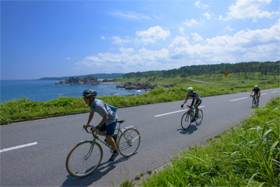 © Aomori Prefecture 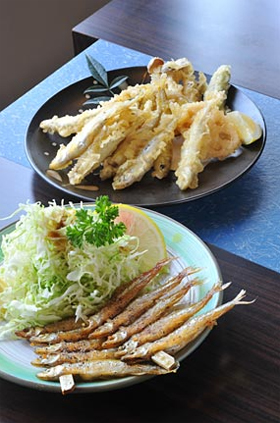 © Web Japan 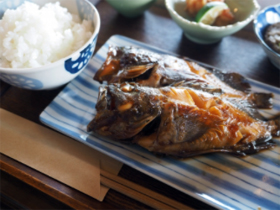 © photoAC 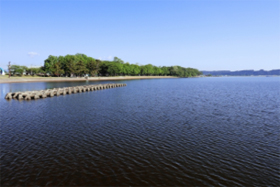 © photoAC 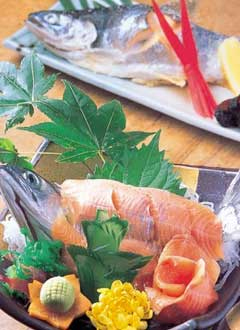 © Mapple.net/Shobunsha 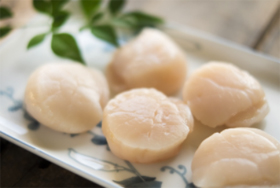 © photoAC |
|
In autumn, the seas around Aomori are best known for its delicious mackerel and flounder. The abundance of plankton in the seas off the Hachinohe coast means that mackerel caught in the area are large and fat. The two most common species found in Hachinohe are the chub mackerel and the blue mackerel; the chub mackerel has firm flesh that is suited for curing and prepared as sushi, while the blue mackerel has soft, fatty flesh that is best suited for grilling. Although the flounder can generally be found year-round, its peak season is in the autumn. It is found in the seabeds around the region, and it is prized for its delicate, white flesh. Aomori is known for serving a dish known as Hirame no Zukedon (ヒラメの漬け丼). This dish, which consists of marinated slices of raw flounder arranged atop a bowl of rice, is a local specialty.
Whether one is visiting during the depths of winter or the height of summer, Aomori is sure to have a plethora of delectable seafood choices. With a wide range of fish, squid, and scallops available, and cooked in every way imaginable, Aomori is an indulgent paradise for seafood lovers. JCC is currently shining the spotlight on Aomori on our Facebook page. Do keep an eye out on these platforms to learn more about the northernmost prefecture on the main island of Japan, and the charms of its people and geography! |
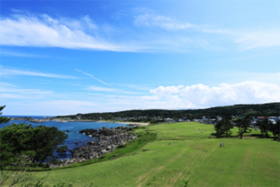 © photoAC 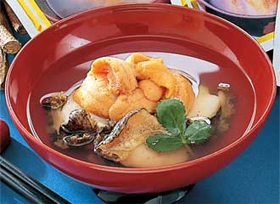 © Aomori Local Producers Federation |
Resources
|
AOMORI - DESTINATIONS. (2020). Retrieved 20 September 2020, from https://www.ana-cooljapan.com/destinations/aomori#/season |
|
Japan Creative Centre 4 Nassim Road, Singapore 258372 +65 6737 0434 / jcc@sn.mofa.go.jp https://www.sg.emb-japan.go.jp/JCC/ Nearest parking at Orchard Hotel & Delphi Orchard |
 |